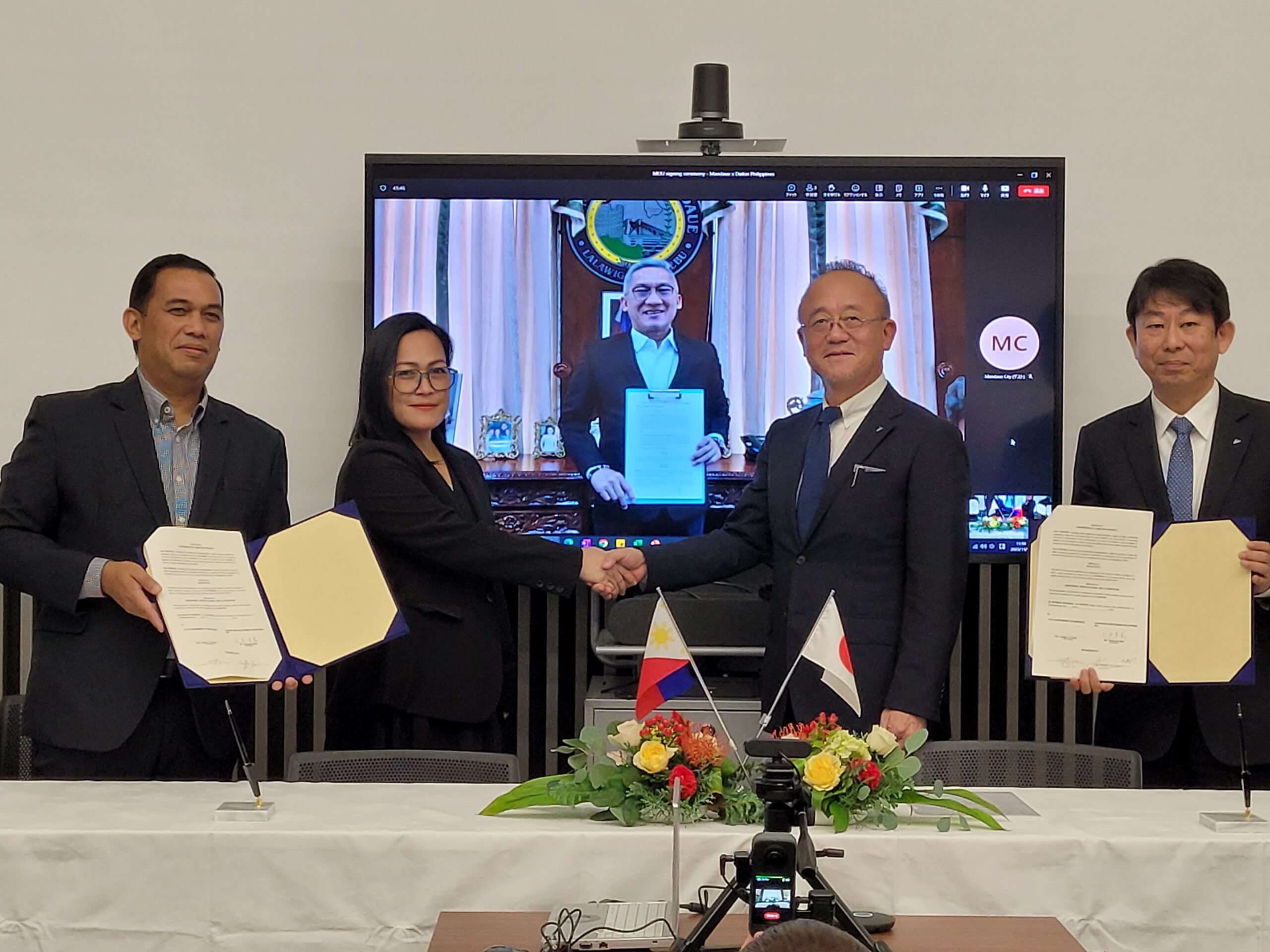
Daikin Airconditioning Philippines Inc. and the City of Mandaue forged a strategic partnership to boost technology cooperation for sustainable urban development and energy efficiency. The two parties signed a Memorandum of Understanding (MOU) at the Technology and Innovation Center (TIC) at Daikin’s Yodogawa Plant in Osaka, Japan on Nov. 16, 2023.
Daikin Airconditioning Philippines, a subsidiary of Daikin Industries, Ltd., the world’s largest air conditioning manufacturer headquartered in Osaka, will support the City of Mandaue with its Green Building Ordinance to ensure it retains its investment location potential.
Mandaue Mayor Jonas Cortes stressed how the partnership with the technology leader in the HVAC industry signifies a commitment to meet global standards and build a better urban landscape.
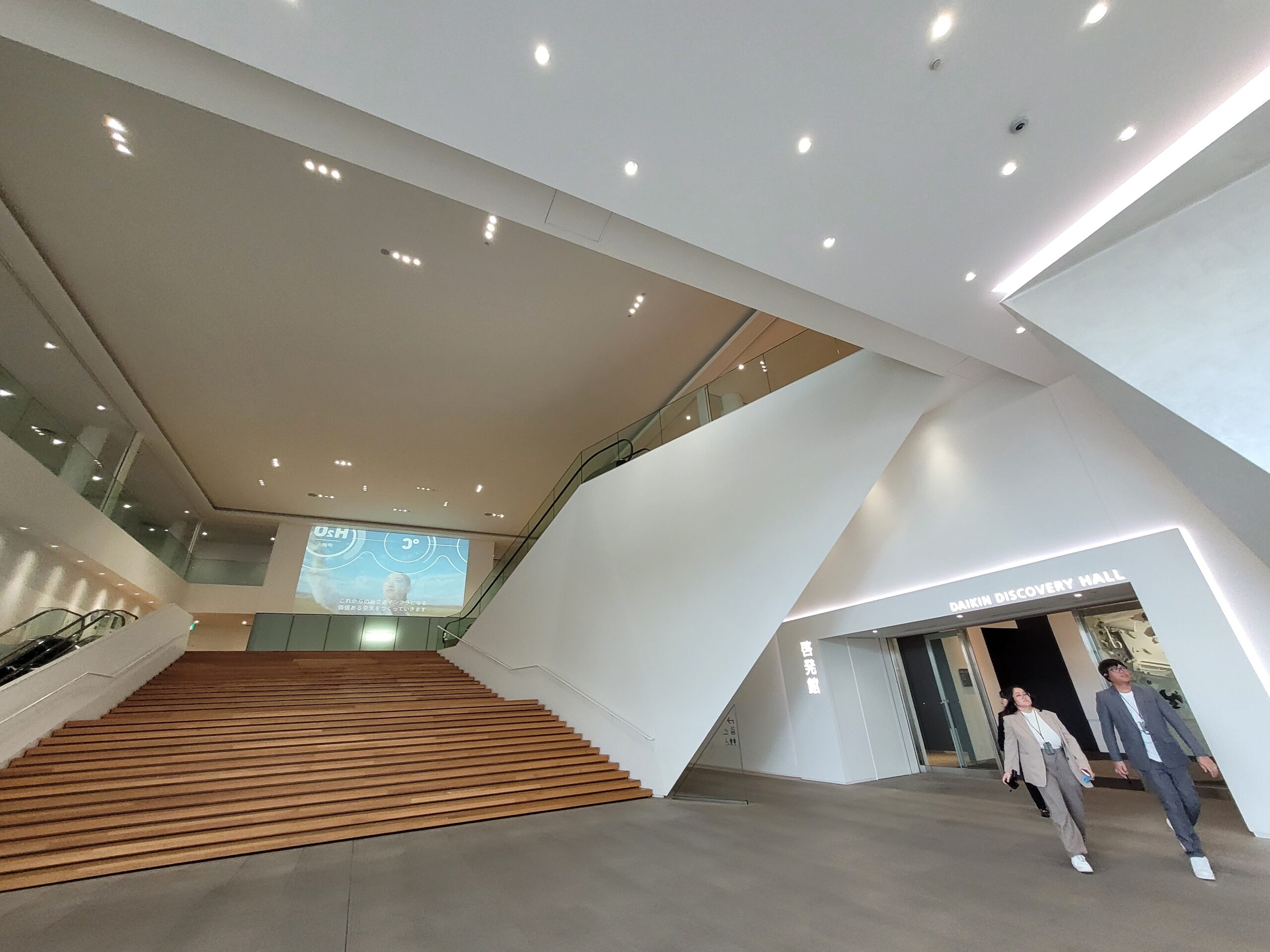
“At the heart of our collaboration lies an unwavering commitment to tackle the hurdles posed by the swift urban growth in our beloved city of Mandaue. We are diving into challenges like traffic management, waste control, environmental protection, and flood resiliency head-on. Daikin Philippines Inc., with its cutting-edge air conditioning solutions and strong devotion to energy efficiency, becomes an invaluable partner in our quest for a city that’s not just livable but sustainable,” said Cortes, speaking remotely from Mandaue City.
Daikin Airconditioning Philippines President Takayoshi Miki likewise praised the local government for taking steps to lower their carbon footprint during the event.
“Last year we had a meeting in your office where we learned of your pride and passion in attaining sustainability and efficiency in your city. We are lucky to find such good partners who are purposely driving to achieve progress for the City of Mandaue,” said Miki.
Present at the signing ceremony were Philippines Green Building Council (PHILGBC) Chief Executive Officer Christopher Dela Cruz, Mandaue City Councilor Jennifer del Mar, and Daikin Industries General Manager of Global Operations Division Junichi Ohmori.
The MOU signing was also witnessed by representatives from PHILGBC, Daikin Philippines, officials of Mandaue City, and select media representatives, who were given a background on the Japanese multinational conglomerate’s history and updates on the latest technological advancements in the field of air conditioning.
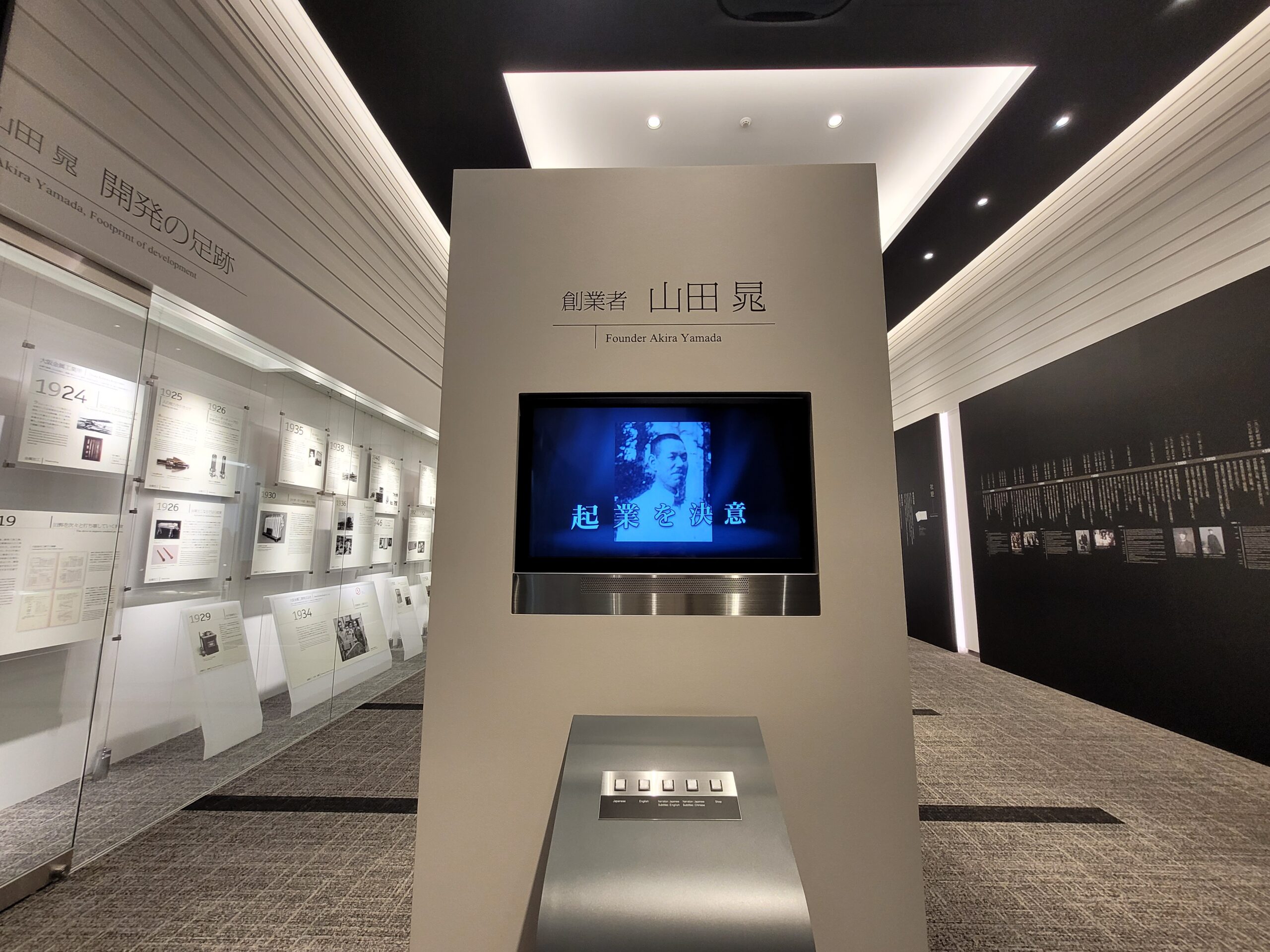
Inside the Technology and Innovation Center (TIC)
Delegates were given a first-hand tour of the award-winning Technology and Innovation Center (TIC) in Daikin’s Yodogawa Manufacturing Plant Complex, in Settsu City in Osaka.
The core facility provides a venue for showcasing advancements in environmental technologies since Daikin was first established in 1924 that can be used as models for energy efficiency around the world.
The research and development center is the first large-scale office building in Japan to achieve the highest rank of Platinum Certification in the LEED (Leadership in Energy and Environmental Design) for New Construction (LEED-NC) rating system.
Developed and managed by the U.S. Green Building Council (USGBC), LEED is a green building certification system that has expanded globally as an evaluation system for environmentally responsible buildings and area development.
The six-floor building covering 49,000 m2 of floor space was designed using Japan’s Zero Energy Building (ZEB) concept, utilizing tech and design features to reduce energy consumption while maintaining indoor temperature comfort.
In a tour of the facility, officials showed how Daikin’s exterior walls incorporate eaves that serve both an aesthetic and useful function by shielding 50% of direct sunlight, resulting in fewer shadows while still bringing in the natural light. The building also makes use of a centralized controller to control electric blinds and high-performance Low E double glass for thermal insulation to limit the building’s air conditioning load.
The large open-type office area makes use of a combination of VRV (or Variable Refrigerant Volume systems based on Inverter technology compressors developed by Daikin) and DESICA (which uses a heat pump to absorb and release moisture into the air) to process sensible and latent heat separately. The advanced models ensure ultra-high air-conditioning efficiency. The building also makes use of mechanical ventilation and outdoor air to help cool the air conditioning units.
The airy entrance hall has a unique air conditioning system that harnesses natural energy and infuses seasonal scents which are distributed through the ventilation system to provide a comfortable working area while saving energy.
Meanwhile, Daikin’s rooftop facility harnesses renewable energy through the use of fixed solar panels all around the building along with solar trackers which are programmed to move and face the sun throughout the day.
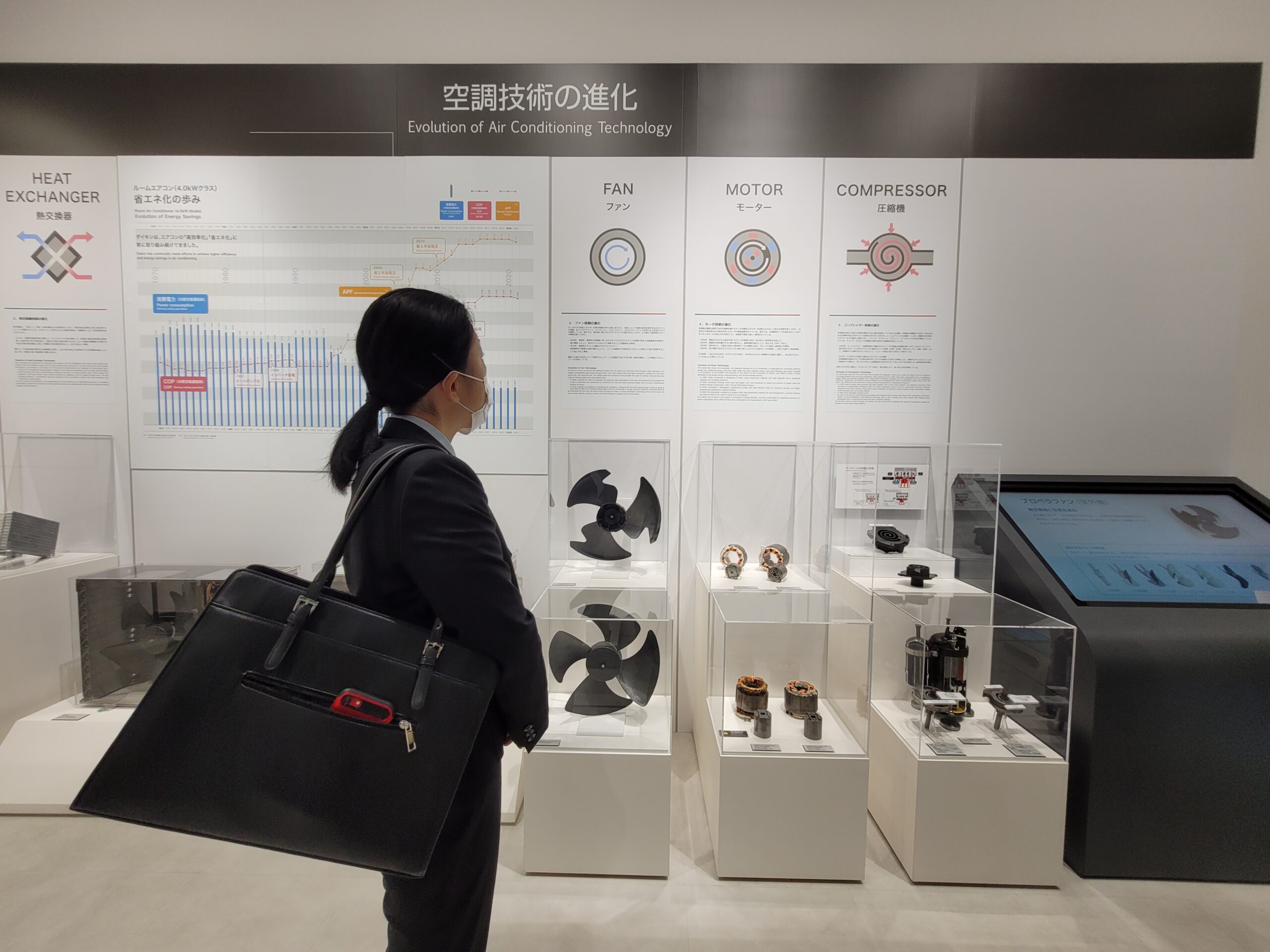
Fostering collaborative innovation
Another highlight of the TIC tour was seeing the evolution of air conditioning systems from the past nine decades in the Daikin Discovery Hall and the laboratories and offices where engineers continue to develop new technologies for the future.
Considering the prevalent practice in Philippine offices featuring enclosed cubicles and conference rooms, it was notable how the shared office spaces in Daikin were designed to break down barriers among engineers and encourage joint efforts.
Experts in different fields work in an open office design with just a few glass walls to accelerate synergy and teamwork within the company. Everyone can see colleagues within a 30-meter radius and multiple meeting points in between desks provide venues for discussions.
At the center of the office space is the “Waigaya Stage” which enables meetings to be easily held across divisions. Nine hundred individuals can gather in a single space to promote a culture of collaboration.
Daikin also promotes collaboration among colleagues by installing vending machines that require simultaneous operation by two individuals to encourage them to discuss ideas together.
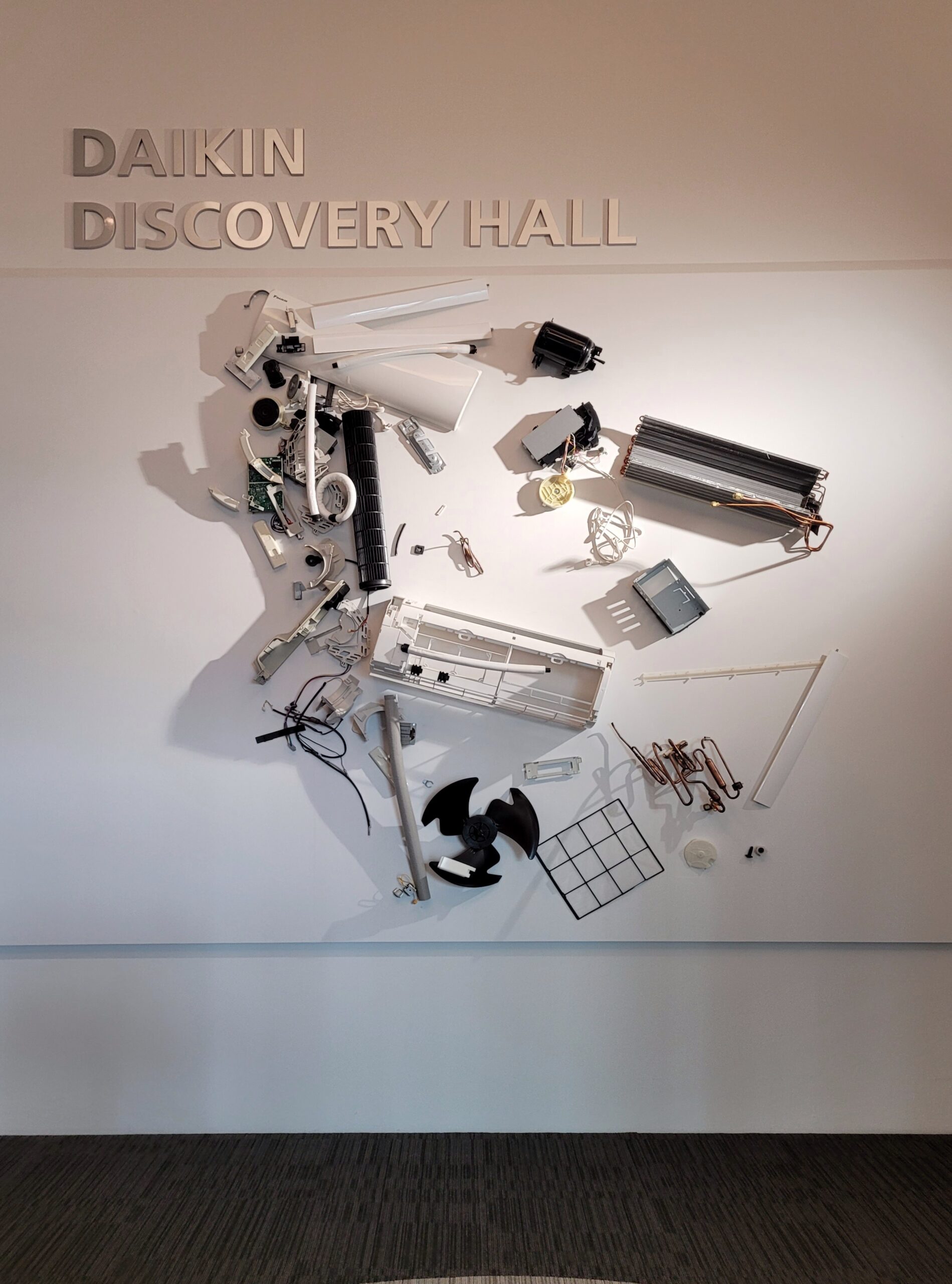
Simple solutions for energy efficiency
In a media briefing, Daikin officials noted that global energy consumption due to air conditioning has risen sharply due to COVID-19.
In the Philippines, basic needs, like electricity are rapidly becoming more expensive for consumers and commercial operators, while climate change is causing temperature levels to rise.
Daikin officials also cited the “excessive cooling culture” in the ASEAN region as a major challenge. AC temperatures are normally set low in offices, at roughly 23 degrees, with workers wearing jackets and feeling chilly.
Replacing normal ventilation with Daikin’s energy recovery ventilation can reduce the load of heat and humidity from outside air, making indoor temperature comfortable even at 26 degrees, leading to energy savings and comfort.
Responding to BusinessWorld, Deputy Division Manager of Daikin Philippines Wesley Andre Chu explained that Daikin developed a “cooling-only VRV model” specific for tropical countries like the Philippines that doesn’t require heating.
While the VRV model that makes use of an inverter technology, which does not only control the cooling but also the humidity, is not yet popular in the Philippines, Daikin hopes to make it more widely known.
Chu stressed how the partnership aims to increase awareness regarding the latest trends and technologies in air conditioning, ventilation, energy efficiency, indoor air quality, and environment protection that are already available and can be used to reduce energy consumption in offices, residential, and commercial areas in the future given the economic expansion and potential growth of the area.
Citing a recent study, a representative from Mandaue noted that the heat index in the city has increased by 2% and they are considering Daikin’s new technology for a planned new government center in Mandaue, which they hope to turn into a green building.
Just like the art piece outside the Daikin Discovery Hall made from parts of an air conditioner, that reflects a shadow of a running man, Daikin’s efforts reflect the company’s collaborative goal for energy efficiency. The partnership forged by Daikin and the City of Mandaue is another leap forward in the journey toward sustainable urban growth.
Learn more about Daikin at www.daikin.com.ph. — Kara Santos
Spotlight is BusinessWorld’s sponsored section that allows advertisers to amplify their brand and connect with BusinessWorld’s audience by enabling them to publish their stories directly on the BusinessWorld website. For more information, send an email to online@bworldonline.com.
Join us on Viber at https://bit.ly/3hv6bLA to get more updates and subscribe to BusinessWorld’s titles and get exclusive content through www.bworld-x.com.



